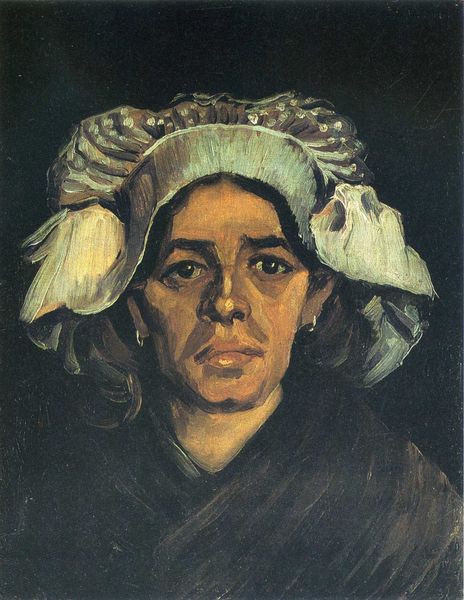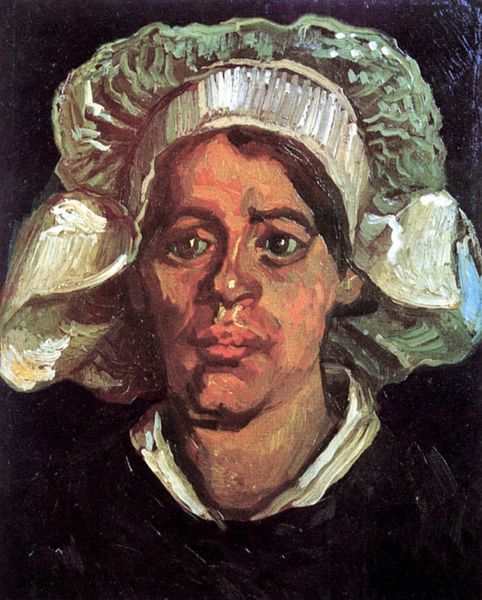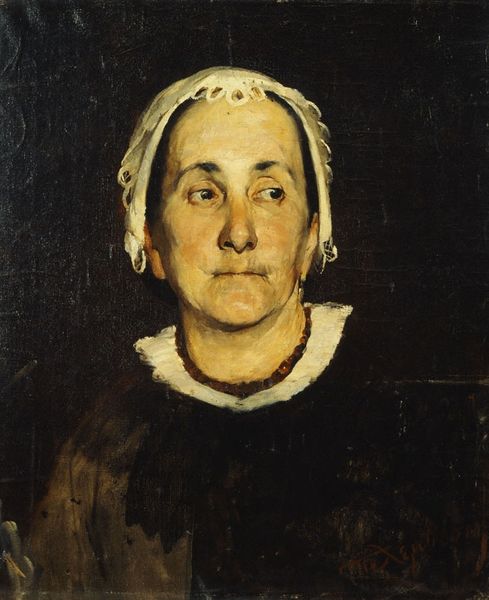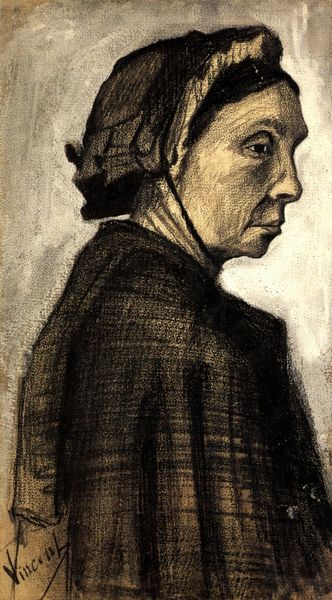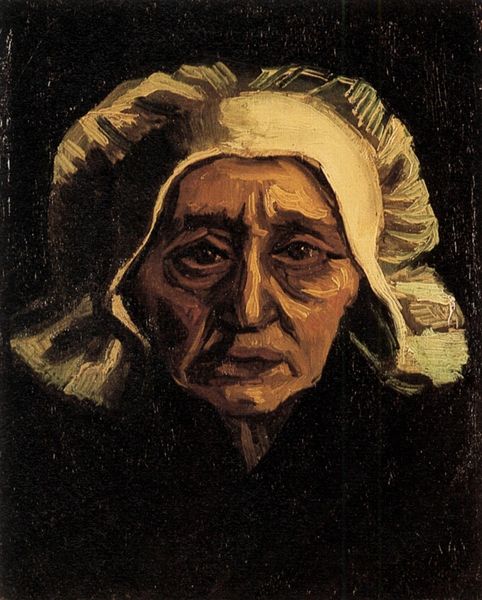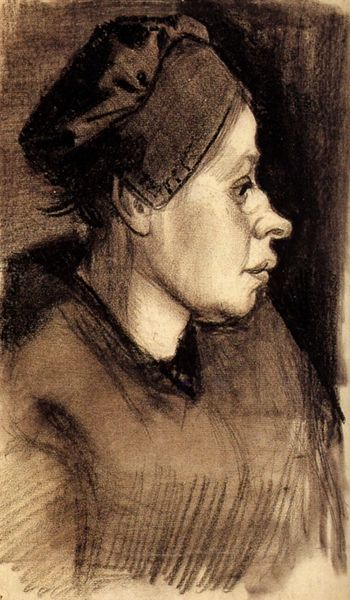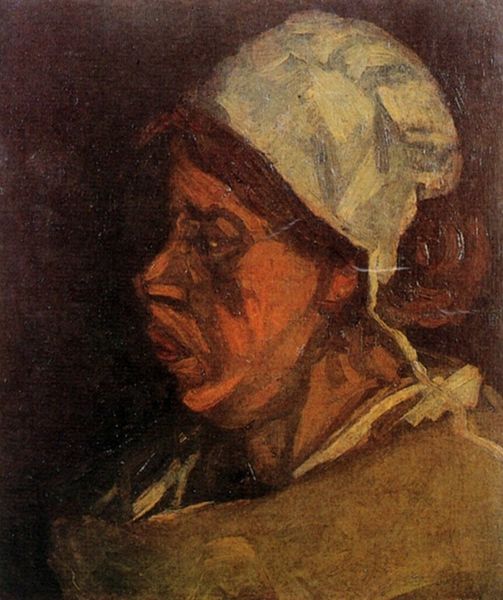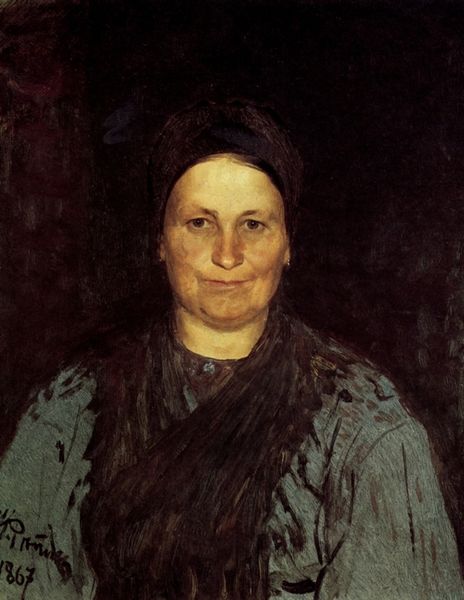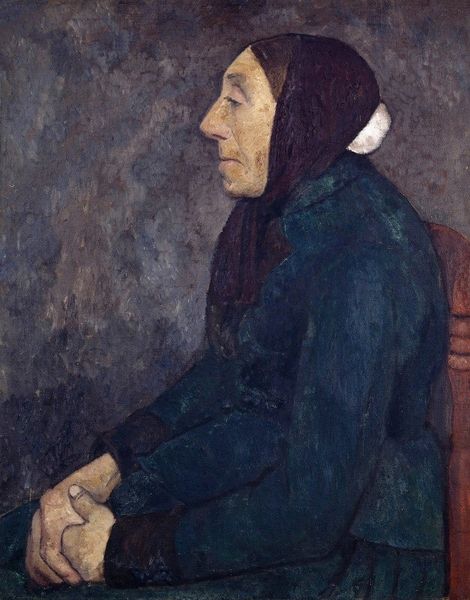
Head of a Peasant Woman with White Cap 1885
0:00
0:00
vincentvangogh
Kunstmuseum Bern, Bern, Switzerland
painting, oil-paint
#
portrait
#
painting
#
oil-paint
#
oil painting
#
post-impressionism
#
realism
Copyright: Public domain
Curator: Van Gogh's "Head of a Peasant Woman with White Cap," created in 1885, offers an intimate portrayal rendered in oil paint. What strikes you first about this work? Editor: It's the intensity of her gaze that captivates me. There’s a directness, a vulnerability, that's immediately apparent in the figure's wide eyes and somewhat unsettled expression. The earth tones create a somber, perhaps even melancholic mood. Curator: The choice of earthy pigments certainly roots the piece in its social context. During his Nuenen period, Van Gogh was deeply engaged with the lives of the peasant class, focusing on their labor and their environment. The materiality of the paint, thickly applied, speaks to the physical hardship of their existence. He wanted to paint them in all their authenticity, resisting idealization. Editor: Absolutely, and this textural quality is paramount. The brushstrokes are visible, energetic. Look at how he's modeled the planes of her face, capturing the light. The construction of form through color is evident here. He's simplified shapes, distilled them to their essence. Curator: Precisely, and consider the cap itself. It's not just a head covering; it’s a symbol of her station, her identity within this rural community. It also directs the viewer's focus to the face, encouraging a consideration of her lived experience. The question, of course, remains about who the sitter might have been. Editor: Perhaps we can appreciate how the muted palette serves to concentrate our attention on her face, making the cap become more of a frame than a costume piece. It is the human face that reveals so much character. The composition feels very intentional, designed to force an encounter with this individual's spirit. Curator: Agreed. It reveals Van Gogh's process of engaging with ordinary workers. There is dignity portrayed, despite the hard toil and worn faces; the materiality reveals a certain reality of 19th-century rural workers. Editor: In conclusion, by carefully controlling composition, color, and technique, Van Gogh creates a potent visual representation of the human soul, capturing that deep solemn expression for posterity. Curator: I concur. Studying pieces like this grants us the ability to comprehend artistic ability and, more crucially, the social factors that mold both the artist and their work.
Comments
No comments
Be the first to comment and join the conversation on the ultimate creative platform.
